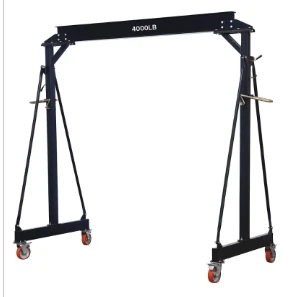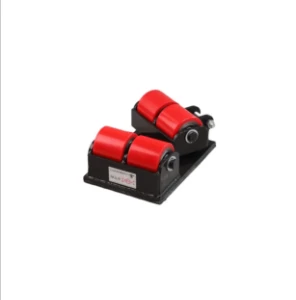يناير . 19, 2025 01:42
Back to list
types of gantry girder
Gantry girders are crucial components that provide structural support in places such as warehouses, manufacturing units, and docks. These girders play an essential role in the movement of overhead cranes, facilitating the lifting and transport of heavy loads efficiently. Understanding the different types of gantry girders is vital for ensuring their appropriate application and optimal performance in various industrial settings.
For specialized requirements, the prismatic girder offers a unique solution. These girders maintain a uniform cross-sectional area throughout their length, allowing for predictable and simplified stress distribution analysis. The prismatic girder type is particularly advantageous in uniform load scenarios, and engineers appreciate their straightforward design when it comes to maintenance and modifications. Moreover, hybrid girders represent an innovative approach, merging materials like steel and concrete to leverage their respective strengths. These hybrid designs provide an optimal balance of flexibility, durability, and cost-efficiency. By employing materials strategically, hybrid girders can reduce overall project costs while enhancing performance, making them particularly appealing for large-scale infrastructure projects that prioritize sustainability alongside structural performance. Furthermore, modular gantry girders are gaining popularity due to their ease of installation and adaptability. These girders are designed with prefabricated sections that can be assembled on-site, offering a practical solution for projects with time constraints or those located in remote areas. The modular nature allows for future scalability and reconfiguration, providing long-term value as demands and operational needs evolve. When choosing the appropriate type of gantry girder, careful consideration of factors such as load requirements, environmental conditions, and installation constraints is critical. Collaborating with specialized engineers ensures that the selection aligns with the specific needs and future expansion plans of a facility. Such expertise in understanding and implementing the right gantry girder type enhances operational efficiency and contributes to long-term structural reliability. In conclusion, the variety of gantry girders available allows industries to tailor their choice according to specific operational demands. Whether prioritizing weight handling, ease of installation, or a balance of materials, understanding the options can lead to more informed decisions, resulting in improved performance, safety, and sustainability in industrial applications.


For specialized requirements, the prismatic girder offers a unique solution. These girders maintain a uniform cross-sectional area throughout their length, allowing for predictable and simplified stress distribution analysis. The prismatic girder type is particularly advantageous in uniform load scenarios, and engineers appreciate their straightforward design when it comes to maintenance and modifications. Moreover, hybrid girders represent an innovative approach, merging materials like steel and concrete to leverage their respective strengths. These hybrid designs provide an optimal balance of flexibility, durability, and cost-efficiency. By employing materials strategically, hybrid girders can reduce overall project costs while enhancing performance, making them particularly appealing for large-scale infrastructure projects that prioritize sustainability alongside structural performance. Furthermore, modular gantry girders are gaining popularity due to their ease of installation and adaptability. These girders are designed with prefabricated sections that can be assembled on-site, offering a practical solution for projects with time constraints or those located in remote areas. The modular nature allows for future scalability and reconfiguration, providing long-term value as demands and operational needs evolve. When choosing the appropriate type of gantry girder, careful consideration of factors such as load requirements, environmental conditions, and installation constraints is critical. Collaborating with specialized engineers ensures that the selection aligns with the specific needs and future expansion plans of a facility. Such expertise in understanding and implementing the right gantry girder type enhances operational efficiency and contributes to long-term structural reliability. In conclusion, the variety of gantry girders available allows industries to tailor their choice according to specific operational demands. Whether prioritizing weight handling, ease of installation, or a balance of materials, understanding the options can lead to more informed decisions, resulting in improved performance, safety, and sustainability in industrial applications.
Next:
Latest news
-
the-power-of-trolley-cargo-and-machinery-moving-solutionsNewsAug.22,2025
-
exploring-magnetic-lifting-devices-for-efficient-steel-plate-handlingNewsAug.22,2025
-
the-essential-guide-toportal-craneNewsAug.22,2025
-
enhancing-efficiency-in-permanent-magnetic-liftersNewsAug.22,2025
-
heavy-duty-machinery-movers-and-material-handling-solutionsNewsAug.22,2025
-
the-comprehensive-guide-to-adjustable-gantry-cranesNewsAug.22,2025
-
The Ultimate Guide to Heavy Machinery Moving EquipmentNewsAug.04,2025
